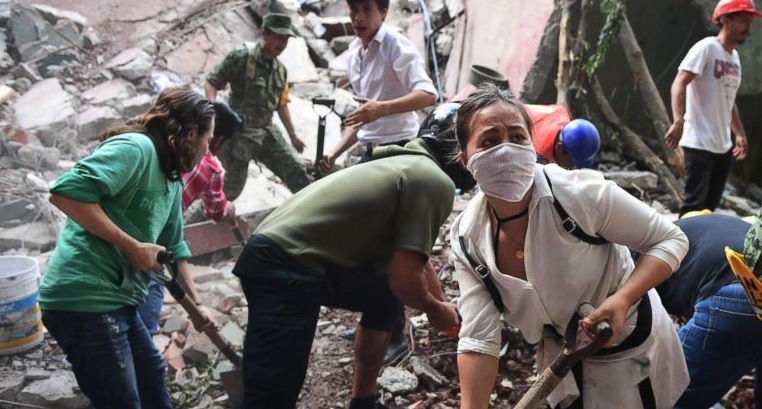
‘Be Prepared’
Mother Nature has an exquisite sense of irony.
On Sept. 19, 1985, Mexico City experienced an 8.0 earthquake that killed at least 5,000 people. Thirty-two years to the day, a 7.1 temblor again struck the capital. Twelve days earlier, an 8.1 quake — the most powerful to hit Mexico in more than a century — shook the city and toppled buildings. The epicenters of the recent two quakes were about 360 miles apart.
“Usually we only see slightly more than one magnitude 7 earthquake per month and one magnitude 8 earthquake per year globally,” explained Chen Ji, a professor in UC Santa Barbara’s Department of Earth Science. “Two earthquakes occurring in two weeks in relatively close proximity is not common. However, we have not yet detected any known causal relationship between the two quakes in Mexico.”
Mexico City is prone to major damage because the city of more than 21 million inhabitants is built on an old lakebed that amplifies the shaking. Los Angeles is built on similar loose sediments. UCSB earth science graduate student Paul Alessio used the analogy of Jell-O.
“If you shake a bowl of Jell-O, it’s going to keep shaking for a long time and those seismic waves are going to get amplified,” he said. However, he noted, while L.A. also is built on loose sediments, the fault structure in Southern California is less likely to generate an 8-plus quake.
“Fortunately, we’ve built much of our infrastructure to withstand the shaking from magnitudes of 7 or greater, so we won’t experience as much building collapse and failure as in Mexico City,” said Alessio. “Santa Barbara is built mostly on bedrock, so it won’t experience intensified and prolonged shaking, which is what will happen in L.A.”
Geologists like Ji and Alessio are expecting a large rupture on the southern San Andreas Fault, which stretches from the Salton Sea southeast of Palm Springs to Parkfield in Monterey County, passing about 35 miles to the northeast of Los Angeles. Such an event would cause a lot of intense shaking in Los Angeles that could be felt as far north as Santa Barbara.
Unlike California, Mexico has an early earthquake early warning system that can provide a brief window for people to shelter in safe places or move to open ground. About 15 seconds before the major shaking began in the country’s most recent quake, the Mexican Seismic Alert System triggered warning sirens. The system consists of a network of sensors placed near fault lines, which in turn activates telecommunications signals capable of moving faster than seismic waves.
“These two quakes in Mexico are a reminder that these events can happen at any time and in a short time interval, one right after another,” Alessio said. “It’s important to always be prepared and to realize that the area we live in is a really active region. You should always have enough water and food for a few days just in case.”



